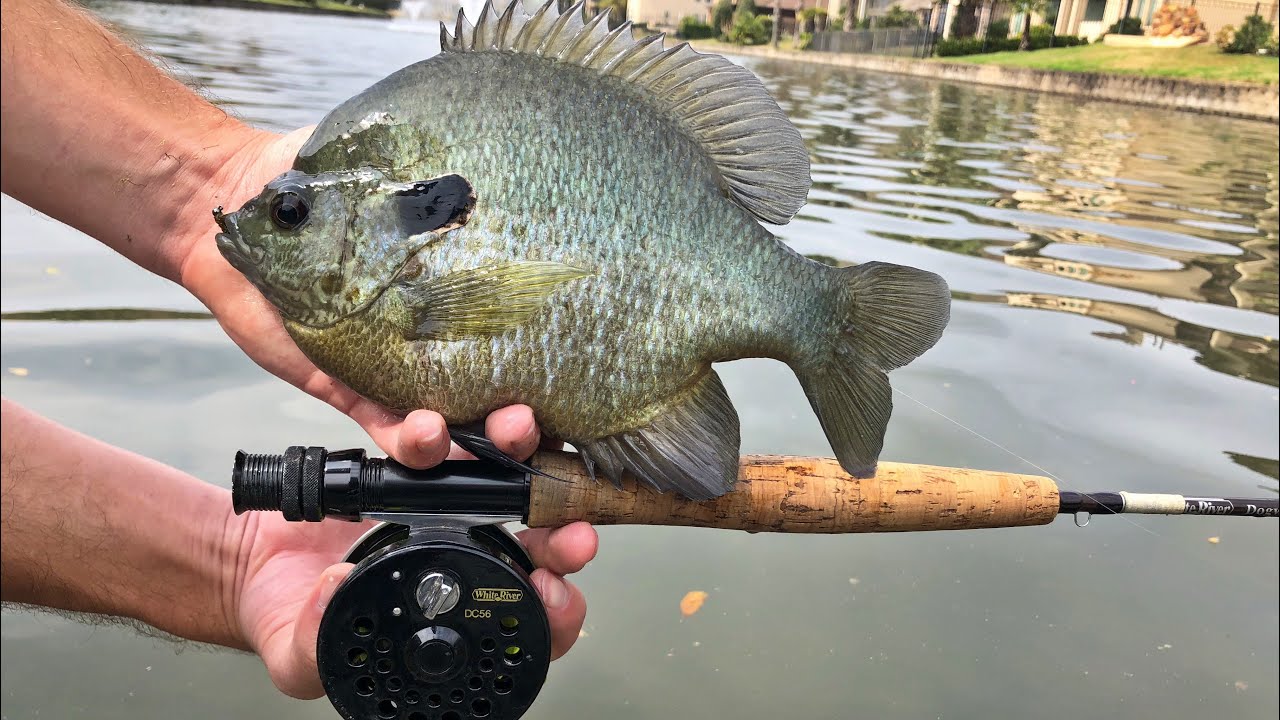Contents
Fly Rods & Poppers Provide Anglers with Pan Fish Action
Casting a popper with a fly rod is a great combination for fishing fun. The key to success is matching the lure and technique to fishing location and conditions.
Fishing for bluegill with a flyrod is a fun way to learn or practice fly fishing techniques. When presented with a properly selected lure in the right setting, bluegill are easy to catch.
Select a Versatile, Lightweight Fly Rod
A fly rod casting no more than 5 or 6 weight line is all that is needed to catch bluegill and other panfish in freshwater lakes and ponds. The lightweight rod with plenty of spring makes landing the small, lively fish more challenging and fun.
Carry an Assortment of Flies
A popper fly assortment assures the angler of having the right lure for any surface fishing condition. Such an assortment should include poppers in both bright and dark colors, along with a few surface flies and minnow imitators.
Choose the Location Carefully
John Bailey, in his book, Fly Fishing, (Creative Outdoors 2004), writes, “Stillwaters reveal their secrets slowly, and serious study will find your catches improving greatly.” It is best to approach the lake or pond quietly and take note of current lighting, temperature, and wind conditions.
Is the water clear or opaque? A brightly colored popper will show up on cloudy water. What insects are noticeable? These are the fish’s natural food, and there may be a fly in the assortment that mimics these well. Are small fish visible along the water’s edge? A minnow imitator can be a good choice. Are other anglers present? A shore with several fishermen will yield few if any, fish that day.
Boats and Waders Give Best Access
The angler who is equipped with a kayak, canoe, or waders can reach areas that are not accessible from the bank. Often, one side of a lake or pond will be rimmed with anglers, but the other, with a steep or heavily wooded bank, will be deserted. A fishing kayak or canoe can make all the difference in getting to the fish. Waders will allow the angler to fish in toward, rather than out from, a bank, or even to wade beyond or around a submerged tree or another fish-harboring cover.
Match the Cast to the Conditions
When fishing near the shore, the angler must contend with overhanging trees and other obstacles. A roll cast is often the best choice in these conditions. Bluegill tends to rest in weed beds and another cover near the shore, so short casts are best, and little false casting is required.
Find the Best Lure for Success
A good lure to try first is a bright orange or yellow popper. The hook barb should be crimped before using so that it will be easier to release the fish. Five or six casts with the popper will tell whether this lure is working in the current location and conditions. If, after working the popper around the area, no fish have hit, the angler should switch to a different type or color of surface fly.
When bluegill are present and biting, they hit the fly quickly, often as soon as it strikes the surface. Fishing a good bluegill hole with a fly rod and popper provides nonstop action for the lucky angler.

